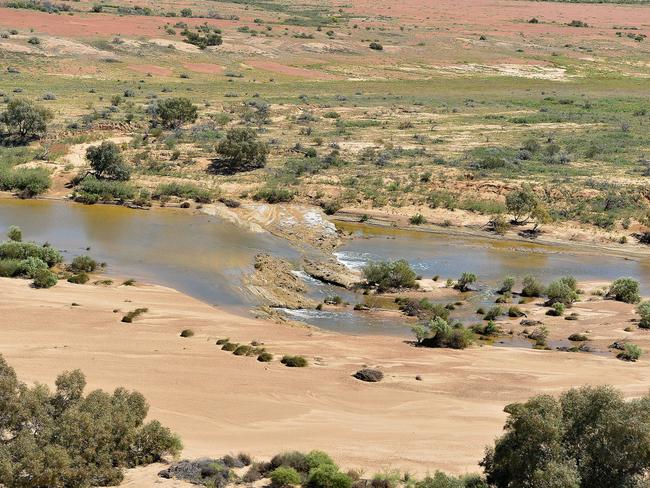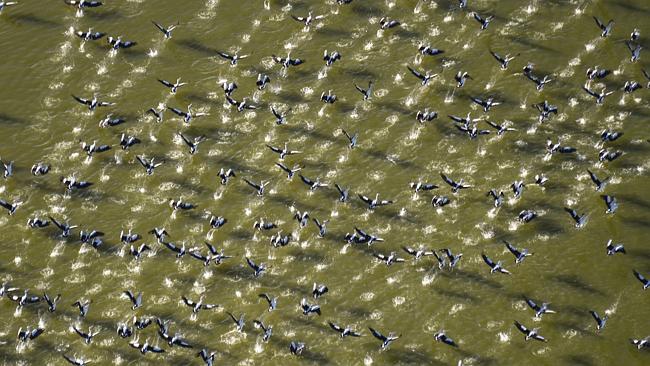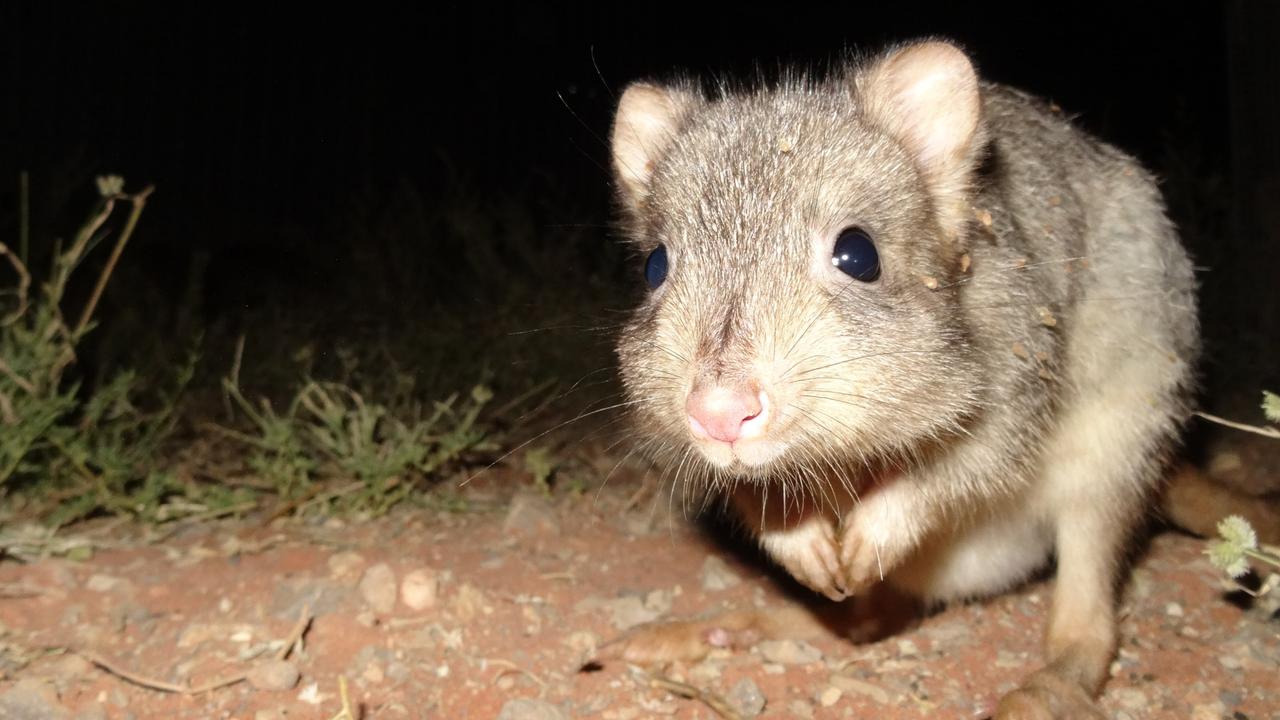Heavy rainfall has transformed Lake Eyre into a mystical oasis
IN one of the far-reaching corners of the South Australian Outback is a mystical oasis that has been evolving for hundreds of years and is now in one of its rarest forms.
IN one of the far-reaching corners of the South Australian Outback is a mystical oasis that has been evolving for hundreds of years and is now in one of its rarest forms.
Lake Eyre is attracting thousands of travellers 700km north of Adelaide to witness its beauty and rarity of water continuing to flow into the world’s largest salt lake.
The Sunday Mail recently flew Wrightsair bush pilot Trevor Wright over the lake, where constant winter rains have helped to transform the arid landscape.
The colours change from red and ochre of the dirt below to a pristine blue and sparkling white as the plane flies over part of the 9500sq km lake.
Mr Wright has more than 30 years’ experience flying over Lake Eyre and says the environment is the best it has looked “in decades”.
He says the lake’s condition is a rarity as the weather starts to soar to blistering summer temperatures, causing the evaporation of trapped waters and increased salinity.

“From the start of September you start to see an increase in temperatures and in evaporation from the lake, but this year it’s been compensated by the amount of water pouring in,” he says.
“Coming into the summer months it will not take much in regards to a tropical low or a cyclonic rain event to cause a major fill in the lake. The biggest fill was
in 1974. There’s no reason, with the catchment being the way it is, we might have a major fill in the coming months leading up to, and including, the summer period.”
Freshwater will flow downstream from the full Coongie Lakes and Warbuton River into Lake Eyre, continuing to breathe life into the normally dry salt pan.
Earlier this year, hundreds of black swans and pelicans were frequently spotted from the air taking advantage of frequent freshwater flows entering the lake
in search of their next catch.
During the 1989-90 flood, it was estimated that 200,000 pelicans — 80 per cent of Australia’s total population — came to feed and breed at Lake Eyre.
Mr Wright said nine pilots based at William Creek for scenic flights have been constantly busy over the winter period after the region exceeded its yearly average rainfall earlier than usual.
“Overall, if it keeps up situation as it is at the moment, I think we’re in for a very promising start to 2017,” he said.
“The biggest issue we have is accessibility to rural and remote areas as well as lack of communications.
“However, by having the aviation business we’ve been also able to move people out of Coober Pedy and Wilpena Pound up to Lake Eyre and surrounding areas.”



